
Roots
The whispers of environmental change have grown louder, reaching even into the quiet corners of our daily routines. For those of us who tend to textured hair, a practice often steeped in cultural significance and personal care, a subtle question begins to form ❉ could the very products we rely upon contribute to the vast expanse of microplastic pollution? This inquiry pulls us to examine the foundational elements of our hair care, moving beyond the immediate sensation of soft curls or defined coils to consider the unseen journey of ingredients once they leave our strands. Understanding the basic composition of modern hair formulations and the journey of these microscopic particles is the first step in addressing this complex environmental concern.
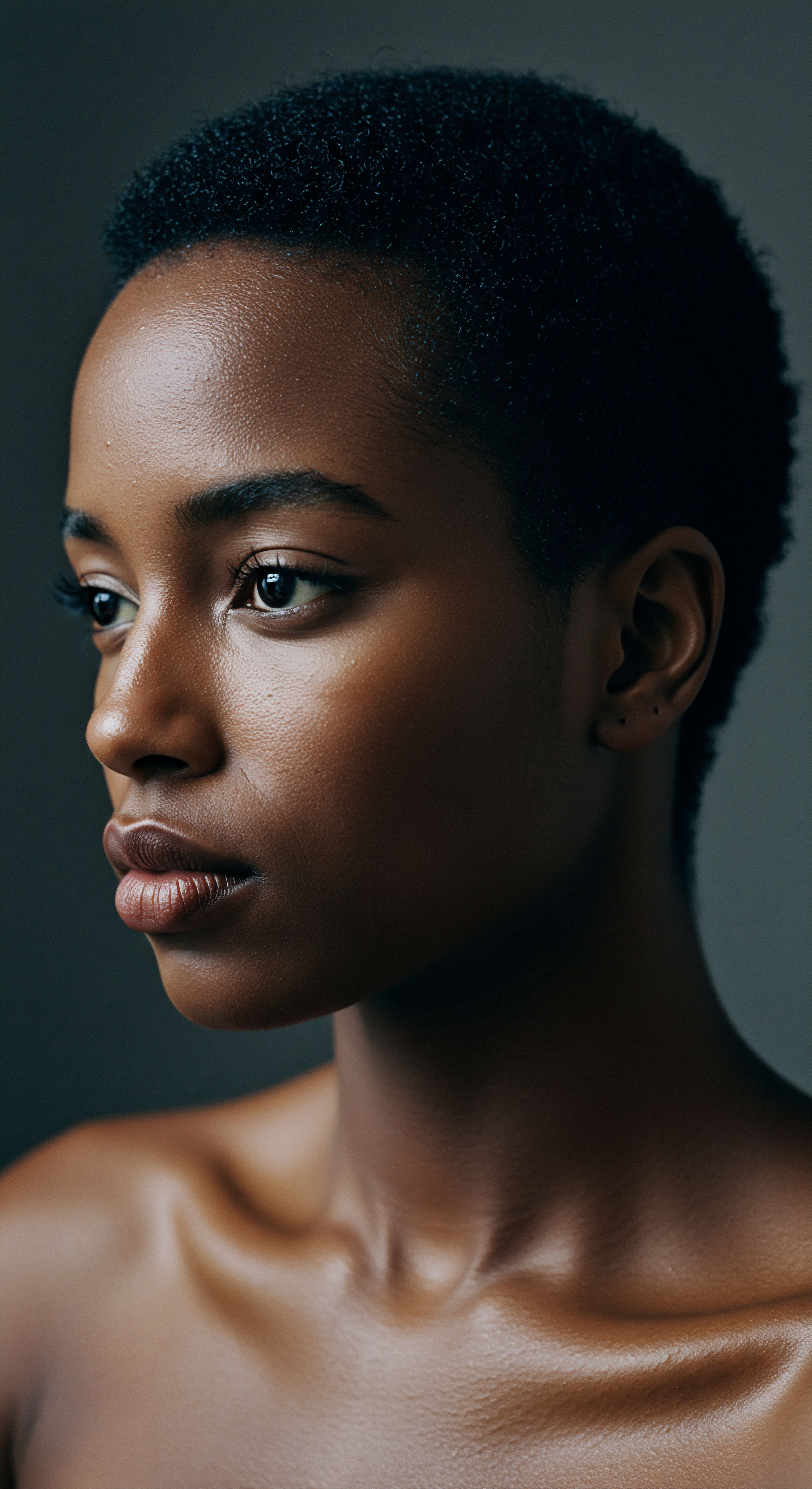
What Constitutes a Microplastic in Hair Products?
At its core, a microplastic is a tiny piece of synthetic polymer, typically less than five millimeters in its largest dimension. These minuscule particles are not always the visible microbeads once common in exfoliating scrubs, which have seen bans in many regions. The landscape of microplastics in hair care is more subtle.
They manifest as various synthetic polymers, often serving to enhance texture, consistency, or provide a particular feel or visual appeal to a product. These can include film-formers that coat the hair, conditioning agents, or ingredients that regulate viscosity.
The European Chemicals Agency (ECHA) defines microplastics as solid-state synthetic microparticles composed of insoluble, non-biodegradable polymers smaller than five millimeters. This distinction is vital ❉ while all microplastics are polymers, not all polymers are microplastics. The classification depends on their physical form, properties, and how the product is used.
Microplastics in hair care extend beyond visible beads, encompassing various synthetic polymers that alter product feel or performance.

Common Polymer Ingredients in Hair Care
A glance at ingredient lists on hair product packaging often reveals a lexicon of scientific names. Among these, several indicate the presence of synthetic polymers that could be microplastics or contribute to microplastic-like pollution. These ingredients serve specific functions, from providing slip for detangling to offering hold for styling.
- Polyethylene (PE) ❉ Historically found in various cosmetics, including some hair products, often for thickening or film formation.
- Polyethylene Terephthalate (PET) ❉ Used to increase product thickness and form a water-resistant coating on hair.
- Nylon (PA) ❉ Frequently serves as a bulking agent or absorbent in beauty preparations, including hair products.
- Polypropylene (PP) ❉ Can be found in various cosmetic products, though its presence in hair care specifically varies.
- Polymethyl Methacrylate (PMMA) ❉ Used in hair products as a film former or thickener.
- Acrylates Copolymer ❉ A common film-forming agent that can create a barrier on the hair, providing a smooth feel. It is often non-biodegradable.
- Carbomer ❉ A synthetic polymer often used as a thickening, suspending, dispersing, and emulsifying agent in gels and creams.
- Polyquaternium ❉ A class of polymers often used as conditioning agents in shampoos and conditioners to provide slip and manageability. While some are liquid and their environmental impact is still under scrutiny, they are considered “skeptical microplastics” by some organizations due to their poor biodegradability.
The difficulty for a consumer lies in the INCI (International Nomenclature of Cosmetic Ingredients) classification, which does not always clearly state whether an ingredient is a microplastic or not. This opacity necessitates a deeper understanding of the chemical compounds themselves.
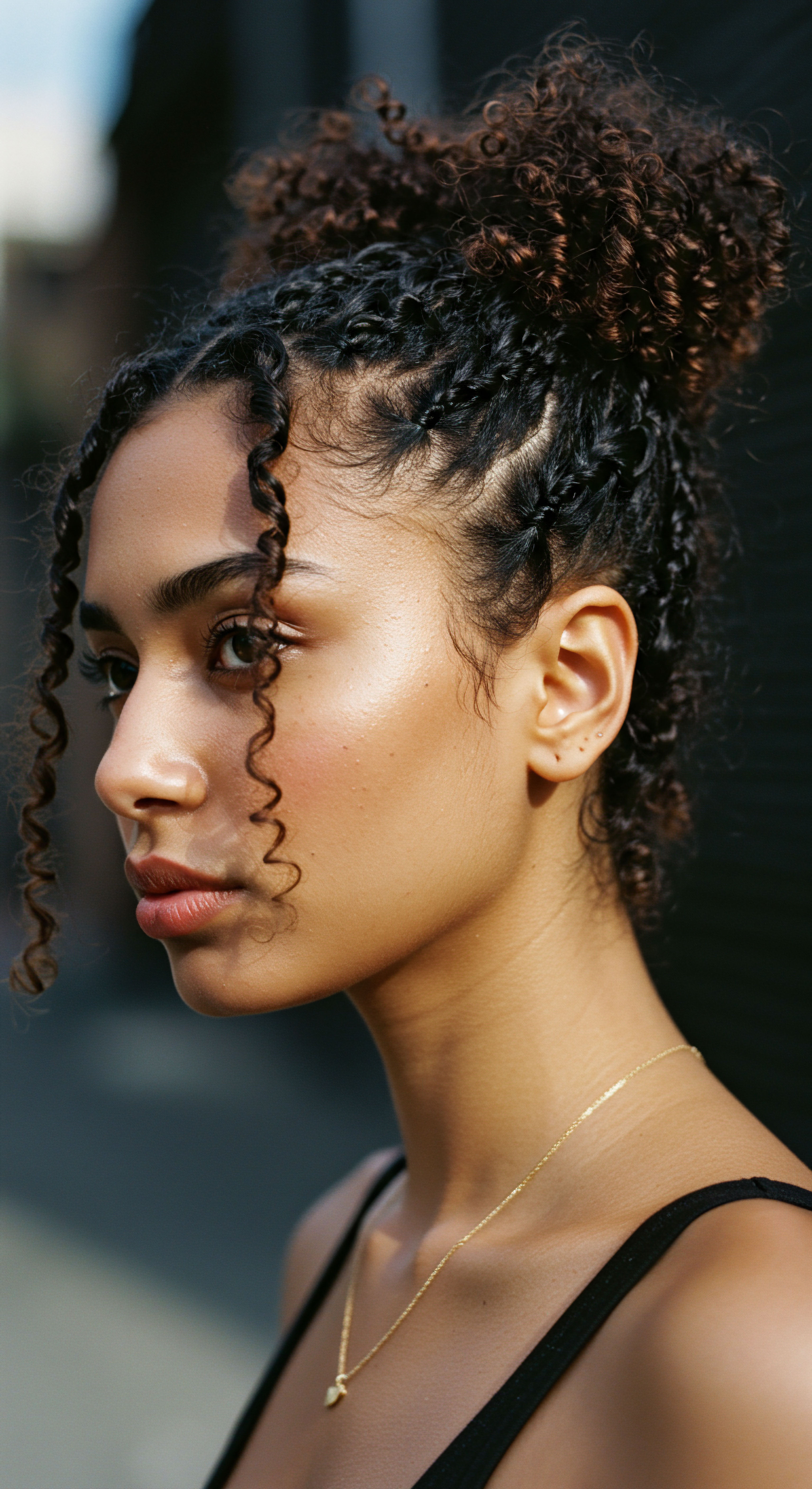
How Do Hair Products Introduce Microplastics to the Environment?
The journey of microplastics from our hair products to the wider environment begins with our daily routines. When we rinse our hair, whether in the shower or sink, these tiny plastic particles and synthetic polymers flow down the drain. Conventional wastewater treatment plants, while effective at filtering larger debris, often struggle to capture these minuscule particles. As a result, a substantial quantity of microplastics can pass through these systems, ultimately reaching rivers, lakes, and oceans.
The problem is not limited to rinse-off products. While microbeads in rinse-off cosmetics have been a focus of regulation and industry phase-outs since 2017 in many regions, the conversation now extends to “leave-on” products like gels, creams, and styling aids. These products, while not immediately washed away, eventually contribute to environmental contamination through various pathways, including showering, washing, or even the natural shedding of hair. The accumulation of these particles in aquatic ecosystems poses a significant threat to marine life, which can ingest them, potentially introducing harmful chemicals into the food chain.

Ritual
Our hair care rituals, whether a simple daily cleanse or an elaborate weekly treatment, are deeply personal acts. Yet, these practices, repeated by countless individuals, collectively cast a shadow on the environmental landscape. As we consider the question of modern hair products and microplastic pollution, we step into the space of daily application, examining how our choices within these routines hold a quiet influence over the world around us. This section delves into the practical aspects of how microplastics find their way into our products and the broader implications for our strands and the planet.
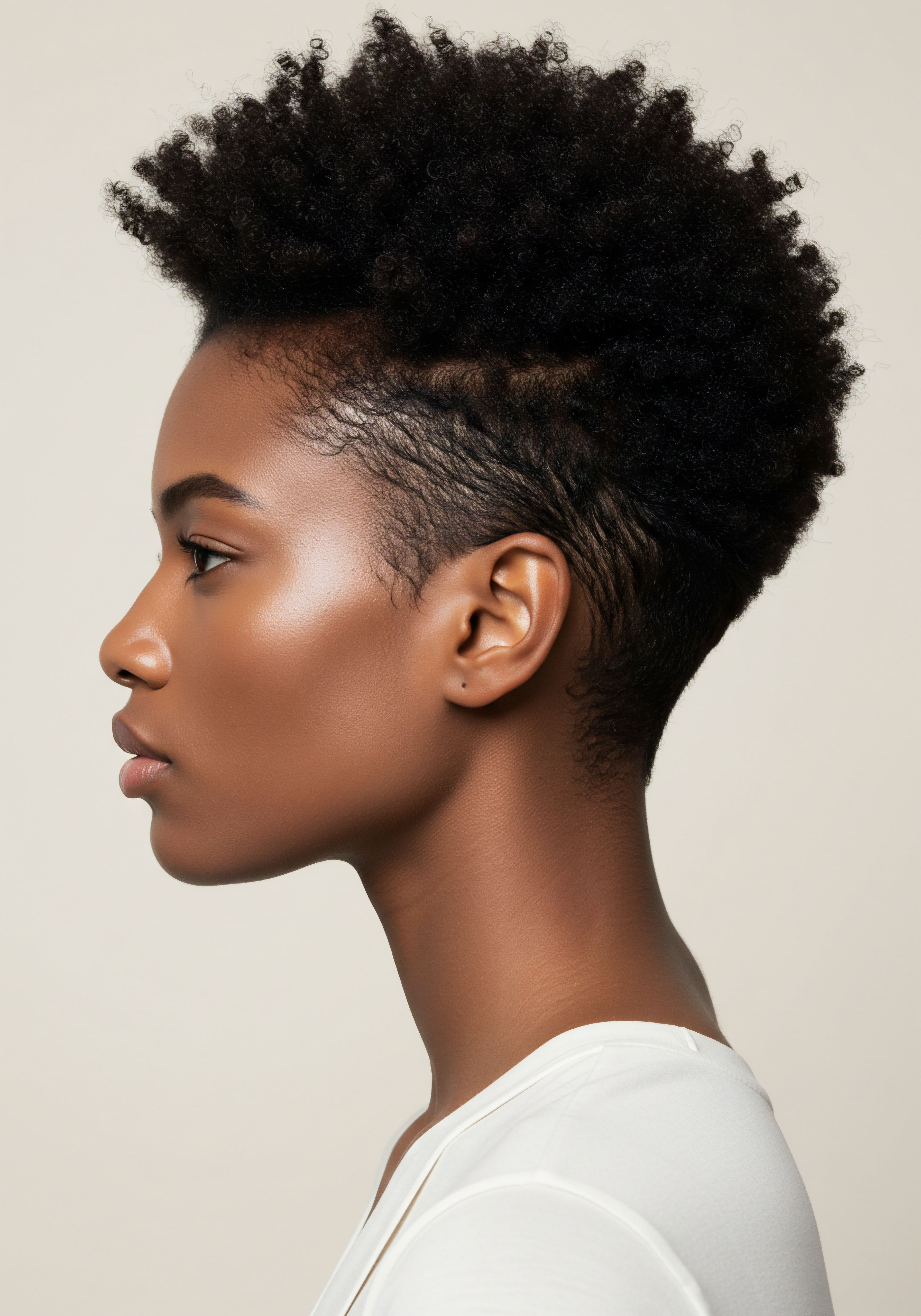
Do All Hair Products Contain Microplastics?
No, not all hair products contain microplastics, though their presence is more widespread than many consumers realize. The use of solid plastic microbeads, particularly in rinse-off products, has seen a significant decline due to regulations and industry initiatives in many countries. For example, L’Oréal states that all their rinse-off products, such as shampoos and shower gels, have been microbead-free since 2020.
However, the conversation extends beyond these visible particles. Many products still incorporate other synthetic polymers that function as liquid or gel-like plastics, which, while not always classified as “microplastics” under strict definitions, pose similar environmental concerns due to their poor biodegradability.
A study led by the Plastic Soup Foundation revealed that despite known issues, microplastics were present in nine out of ten products from the ten most popular cosmetic brands in Europe. Another study found that eighty-seven percent of all cosmetic products contain microplastic, even though only four percent of ingredients within this category will face restrictions under current EU regulations. This disparity highlights the complexity of identifying all environmentally persistent synthetic polymers.
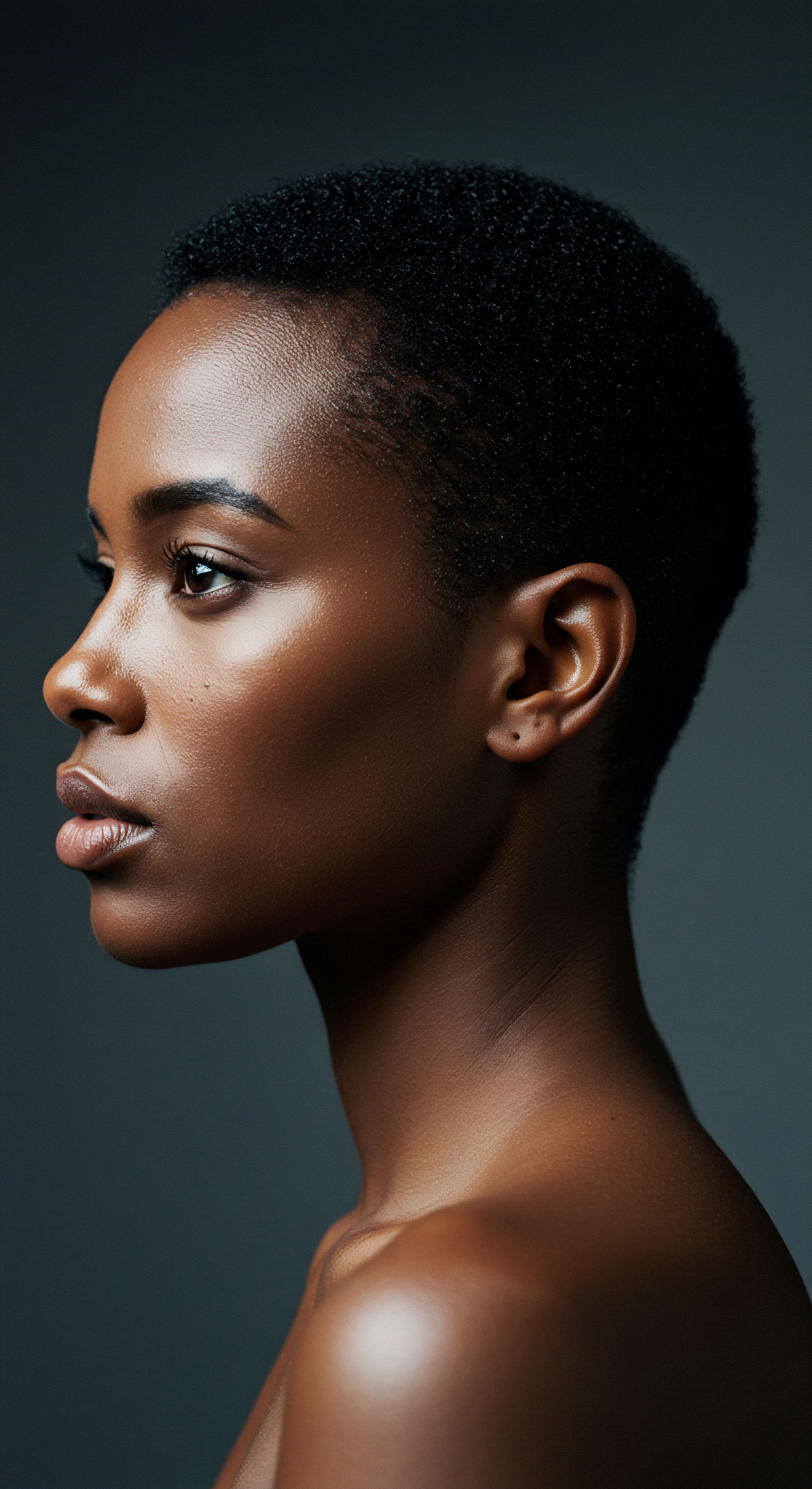
How Do Manufacturers Incorporate Microplastics into Hair Care Formulations?
Manufacturers add synthetic polymers, including those categorized as microplastics, to hair products for a variety of functional and aesthetic reasons. These ingredients are often chosen for their performance benefits and cost-effectiveness.
- Texture and Consistency ❉ Polymers can modify the viscosity and feel of a product, creating desirable textures that spread smoothly or feel luxurious.
- Film Formation ❉ Certain polymers form a thin, invisible film on the hair shaft. This film can provide styling hold, protect against humidity, reduce frizz, enhance shine, or create a smooth, detangled feel.
- Conditioning Benefits ❉ Some synthetic polymers act as conditioning agents, improving wet and dry combability, softness, and overall hair manageability.
- Stabilizers and Fillers ❉ They can help stabilize formulations, preventing ingredients from separating, and sometimes act as inexpensive fillers to increase product volume.
- Visual Appeal ❉ In some cases, microplastics, such as glitter, are added purely for visual effect.
The industry’s reliance on these ingredients stems from their ability to deliver specific product attributes that consumers often seek. However, the environmental consequences of these choices are increasingly under scrutiny.
The allure of product performance often leads to the inclusion of synthetic polymers, yet their environmental fate demands closer consideration.

What Are the Effects of Microplastics on Hair Health?
While the primary concern regarding microplastics is their environmental impact, their presence in hair products can also have implications for hair health, particularly for textured hair.
One notable concern involves Build-Up. Many silicones and synthetic polymers do not easily rinse away, especially without strong clarifying shampoos. Over time, these ingredients can accumulate on the hair shaft, creating a coating.
This barrier, while initially providing a smooth feel, can prevent moisture from properly penetrating the hair, leading to dryness, dullness, and a weighed-down appearance. For textured hair, which often requires significant moisture to maintain its curl pattern and prevent breakage, this build-up can be particularly detrimental.
Furthermore, for individuals with sensitive scalps, certain silicones and polymers might trap dirt and oils, potentially leading to irritation, clogged hair follicles, or flakiness. While these ingredients are generally considered safe for topical use on skin and hair at lower concentrations, the long-term effects of chronic exposure and accumulation are areas of ongoing discussion. The focus for textured hair care often lies in promoting genuine hydration and strength, rather than simply masking concerns with temporary coatings.

Relay
As we move beyond the immediate touch and feel of hair products, a more expansive vista opens, revealing the intricate connections between our personal care and the planet’s well-being. The question of whether modern hair products contribute to microplastic pollution requires us to consider not just the chemistry of a conditioner, but the global currents that carry these unseen particles, the policies that attempt to stem their flow, and the cultural shifts that redefine beauty itself. This section invites a deeper contemplation, drawing upon research and data to illuminate the profound impact of our choices.
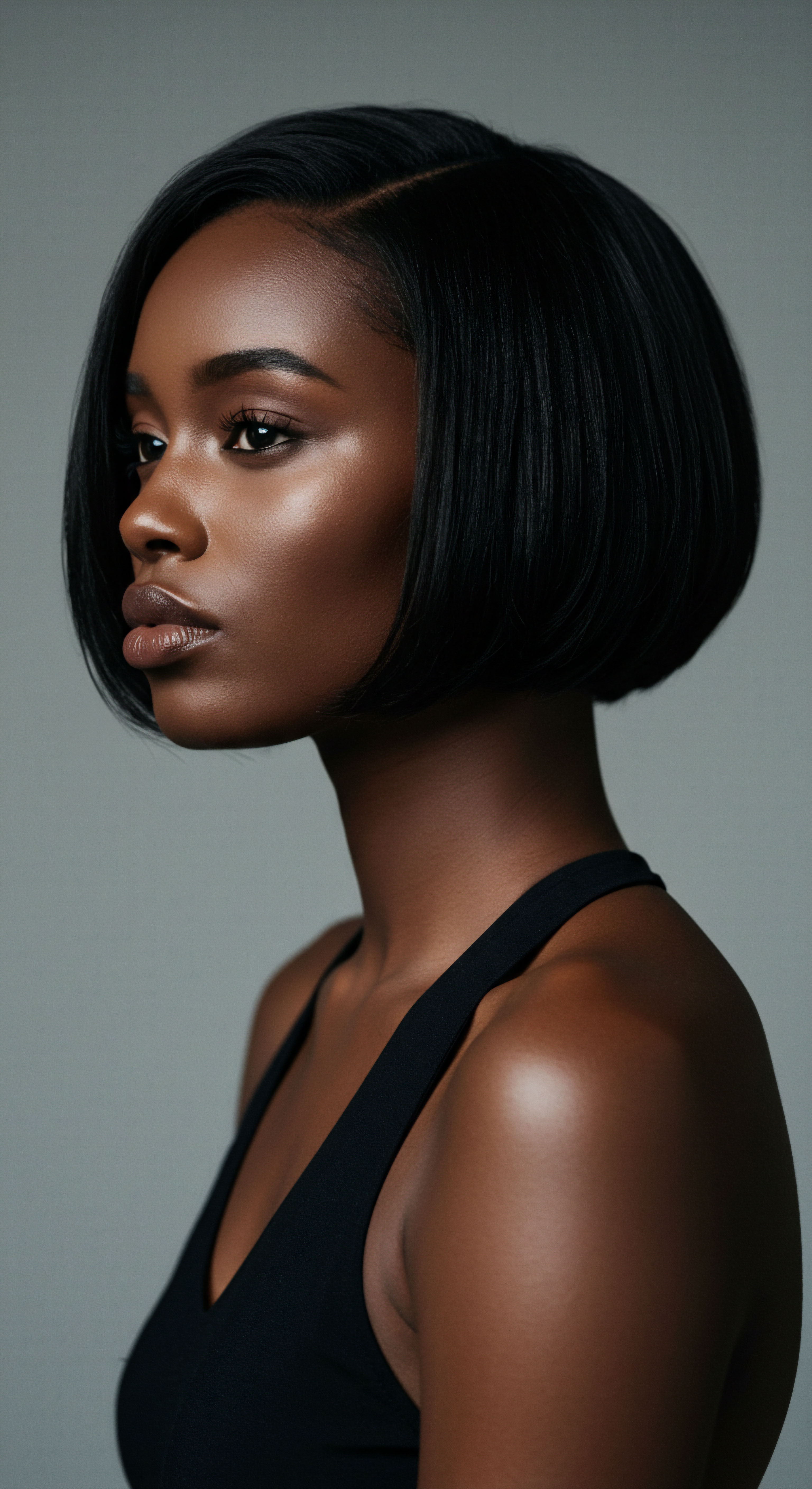
How Do Microplastics from Hair Products Impact Aquatic Ecosystems?
The journey of microplastics from our drains to aquatic environments is a well-documented concern. Once these minuscule particles, often measuring less than five millimeters, enter wastewater systems, many escape filtration due to their diminutive size. They then enter rivers, lakes, and ultimately, the vast expanse of the oceans. Here, their persistence becomes a critical issue; they are non-biodegradable, meaning they do not break down naturally within a human timescale.
The presence of microplastics in marine environments poses a direct threat to aquatic life. Small fish and other marine organisms often mistake these particles for food, ingesting them. This ingestion can lead to physical harm, including blockages in digestive tracts and reduced feeding, ultimately impacting growth and reproduction. Moreover, microplastics can act as carriers for other environmental pollutants, absorbing toxic chemicals from the surrounding water.
When ingested, these contaminated particles can then transfer those chemicals into the organisms, potentially introducing them into the food chain. This contamination eventually reaches higher trophic levels, raising concerns about human consumption of seafood.
Beyond direct ingestion, microplastics also affect ecosystems by altering habitats and interfering with natural processes. Their accumulation can impact sediment composition and oxygen levels in aquatic environments. The pervasive nature of this pollution is starkly illustrated by studies finding microplastics in diverse locations, from the highest peaks of the Himalayas to the deepest ocean trenches.
The minuscule size of microplastics allows them to bypass filtration, becoming persistent pollutants that threaten aquatic life and food chains.

What Regulations Address Microplastics in Cosmetics Globally?
The growing awareness of microplastic pollution has prompted various regulatory actions worldwide, though the scope and implementation of these bans vary significantly.
Many countries have focused on banning Microbeads, the solid plastic particles intentionally added to rinse-off cosmetics for exfoliation or cleansing.
- United States ❉ The Microbead-Free Waters Act of 2015 phased out plastic microbeads in rinse-off cosmetics by July 2017.
- Canada ❉ Banned the manufacture, import, and sale of toiletries containing plastic microbeads, including cosmetics, from January 2018 for manufacture/import and July 2018 for sales.
- European Union ❉ Regulation (EU) 2023/2055, effective October 2023, restricts synthetic polymer microparticles on their own or intentionally added to mixtures. This includes a phased ban on rinse-off products containing microplastics from October 2027, and leave-on products from October 2029.
- United Kingdom ❉ Implemented a ban on microbeads in rinse-off cosmetics in 2018.
Despite these regulations, a significant challenge remains ❉ the definition of “microplastic” often excludes liquid, gel-like, or wax-based synthetic polymers that are also non-biodegradable and environmentally persistent. For instance, the EU’s restriction, while a step forward, may only cover a fraction of the synthetic polymers currently used in cosmetics. This regulatory gap means that many products continue to contain ingredients like certain acrylates copolymers or polyquaterniums, which are not readily biodegradable and contribute to environmental contamination.
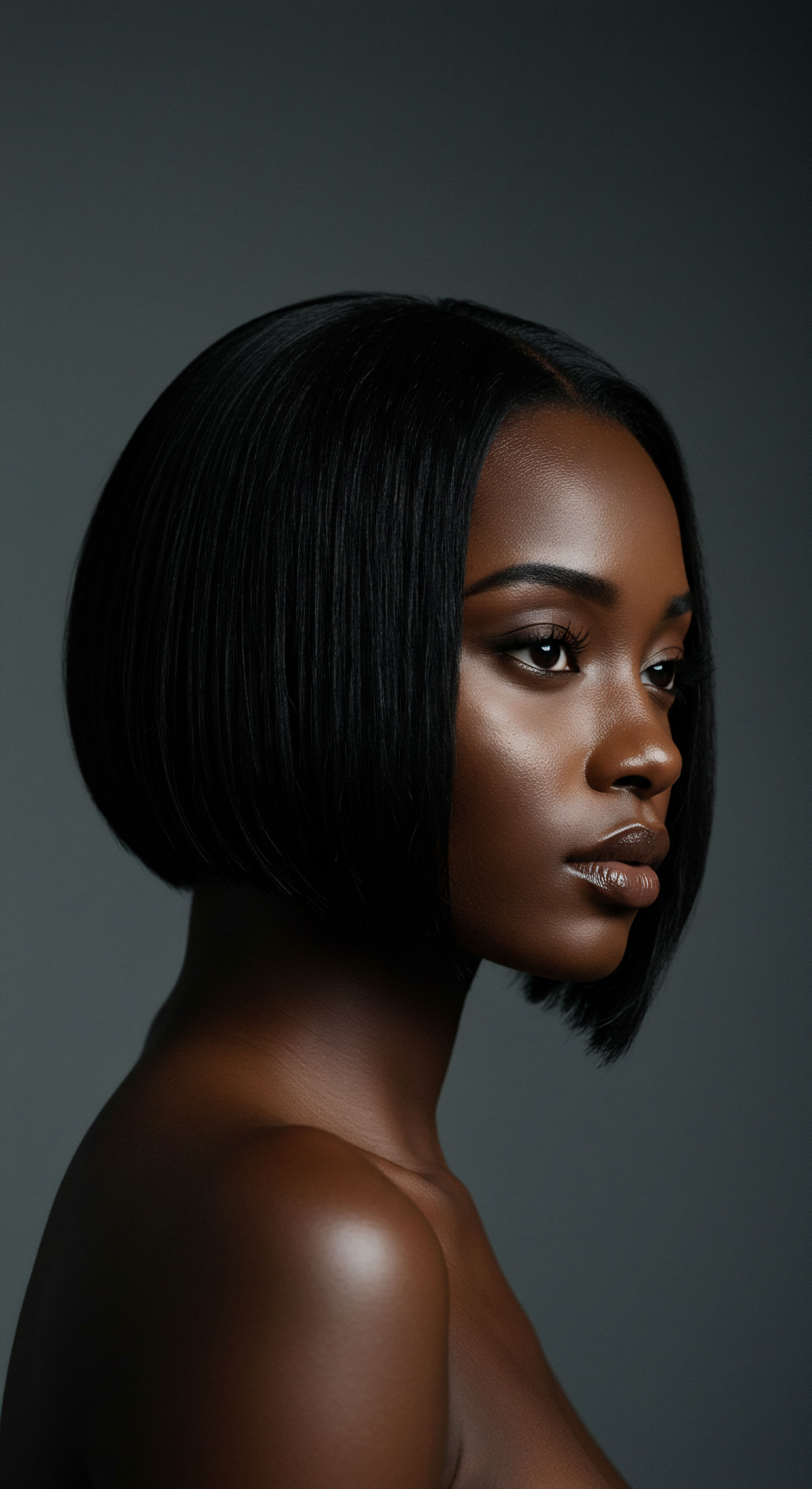
Can Textured Hair Care Practices Reduce Microplastic Footprint?
The unique needs and historical practices associated with textured hair offer avenues for reducing microplastic pollution, moving beyond reliance on conventional formulations. For many with textured hair, routines often involve multiple products for moisture, definition, and protection. This layering, while beneficial for hair health, can inadvertently increase exposure to and release of synthetic polymers.
Historically, textured hair care was rooted in natural ingredients and practices that minimized external inputs. Ancient cultures often utilized plant-based oils, butters, and herbs for cleansing, conditioning, and styling. These traditional methods, which predate the advent of synthetic polymers, inherently carried a smaller environmental footprint.
A shift towards products that prioritize genuinely natural and biodegradable ingredients offers a path forward. The market is seeing a rise in “microplastic-free” and “silicone-free” alternatives that use plant-derived compounds for conditioning and film-forming.
Consider the following aspects of textured hair care that can contribute to a reduced microplastic footprint:
| Strategy Ingredient Scrutiny |
| Description Becoming adept at reading ingredient lists to identify and avoid common synthetic polymers like polyethylene, acrylates copolymer, and polyquaterniums. |
| Strategy Solid Formulations |
| Description Opting for shampoo and conditioner bars, which are often free from plastic-based ingredients and minimize plastic packaging. |
| Strategy Natural Alternatives |
| Description Exploring products that rely on plant-based oils, butters, and extracts for conditioning, slip, and hold. |
| Strategy Mindful Consumption |
| Description Reducing the sheer volume of products used and seeking multi-functional formulations to simplify routines. |
| Strategy Supporting Sustainable Brands |
| Description Choosing brands that transparently commit to eliminating microplastics and prioritize eco-friendly packaging and practices. |
| Strategy These strategies reflect a conscious movement towards practices that respect both hair and the environment. |
A study from the journal Trends of Microplastic Abundance in Personal Care Products in the United Arab Emirates observed a decrease in microplastic-containing rinse-off products from 30% in 2018 to 12% in 2020 in the UAE market, even without binding legislation at the time. This suggests that consumer demand and industry shifts, even in the absence of strict bans, can influence product formulations. While the study did not specifically focus on textured hair products, it highlights a broader trend in cosmetic reformulation driven by environmental awareness.
This collective movement, informed by both scientific understanding and ancestral wisdom, offers a path toward hair care that not only celebrates the inherent beauty of textured strands but also safeguards the delicate balance of our planet. The conversation around microplastics in hair products is not a simple one, but it is a necessary one, guiding us toward more harmonious choices.

Reflection
The journey through the unseen world of microplastics in our hair products reveals a profound connection between our personal rituals and the global ecosystem. It asks us to look beyond the immediate gratification of a product’s performance and consider its lasting footprint. For those who care for textured hair, this conversation resonates deeply, inviting a return to practices that honor both heritage and the health of our shared world. The choices we make, however small, ripple outwards, shaping a future where beauty and environmental responsibility are not separate paths, but a single, harmonious flow.

References
- L’Oréal. Microplastics in cosmetic products – let’s mythbust! L’Oréal, 2020.
- SWOP – Shop Without Plastic. Microplastic in Cosmetics ❉ The Hidden Threat. SWOP – Shop Without Plastic, 2024.
- Thinkbefore.eu. CHEMICALS IN PLASTIC. Thinkbefore.eu.
- Patel, Venya. Biodegradable and microplastic-free polymers for styling, skin care and makeup. Personal Care Insights, 2023.
- What is Plastic doing in my Shampoo? Eco-Friendly Habits, 2024.
- Potter Clarkson. Enhancing cosmetic formulations ❉ The microplastics problem. Potter Clarkson.
- GreenGate. Microbeads in Our Toothpastes – What Did Data in Slovenia Show. GreenGate.
- Cosmetics Ingredients. Acrylates Copolymer (Film Former). Cosmetics Ingredients.
- Green Salon Collective. What happens to hair in landfill? Green Salon Collective, 2023.
- CodeCheck. The Invisible Danger ❉ CodeCheck, 2023.
- Sustainable Beauty ❉ Bio-Based Biodegradable Polymers in Cosmetics. Data Bridge Market Research, 2025.
- TSG Consulting. Microbeads and the industry’s environmental responsibility. TSG Consulting.
- Kakar, F. et al. Microplastics (MPs) in Cosmetics ❉ A Review on Their Presence in Personal-Care, Cosmetic, and Cleaning Products (PCCPs) and Sustainable Alternatives from Biobased and Biodegradable Polymers. MDPI, 2023.
- USRTK.org. Microplastic in “leave-on” cosmetics is understudied; research “urgently required,” experts say. USRTK.org, 2024.
- The Truth About Microplastics in Hair Products (and How to Avoid Them). #TTATTribe, 2025.
- Microbead. Wikipedia.
- Unveiling the Hidden Menace ❉ Battling Microplastics in Cosmetics for a Plastic Pollution-free Beauty Routine. The Ethical Beauty Blog, 2023.
- Nicu, R. et al. Smart and Sustainable Hair Products Based on Chitin-Derived Compounds. MDPI, 2023.
- Hielscher, S. Fisher, T. & Cooper, T. The Return of the Beehives, Brylcreem and Botanical! An Historical Review of Hair Care Practices with a view to Opportunities for Sustainable Design. Sheffield Hallam University Research Archive, 2009.
- Physico-chemical challenges on the self-assembly of natural and bio-based ingredients on hair surfaces ❉ towards sustainable haircare formulations. RSC Publishing Home, 2023.
- Human hair is an untapped resource for sustainability. Sustainable Salons.
- Elchemy. What is Acrylates Copolymer? Its Role in Personal Care & Industrial Formulations. Elchemy, 2025.
- Rethinking Human Materials – What Design Can Do. What Design Can Do, 2023.
- Katherine Haircare. Historical Hair Care Grew My Hair to Hip Length! Here’s How. Katherine Haircare, 2022.
- Personal Care and Cosmetic Products as a Potential Source of Environmental Contamination by Microplastics in a Densely Populated Asian City. Frontiers, 2021.
- Habib, H. A. et al. Trends of microplastic abundance in personal care products in the United Arab Emirates over the period of 3 years (2018–2020). PMC, 2022.
- Current research trends on cosmetic microplastic pollution and its impacts on the ecosystem ❉ A review. ResearchGate.
- Nature of solid microparticles found in 37 rinse-off cosmetic products. ResearchGate.
- Beat the Microbead. PLASTIC. Beat the Microbead, 2022.
- Why Are Microplastics Bad for Curly Hair? The Curl Bar, 2025.
- The Ugly Truth About Plastic Waste in the Beauty Industry. 4Ocean, 2025.
- All types of microplastics you should know. EuroPlas.
- The Microbead-Free Waters Act ❉ FAQs. FDA.
- How to Avoid Microplastics in your Cosmetics. Glow Organic, 2024.
- Step-by-step farewell to microplastics in cosmetics. POWTECH TECHNOPHARM, 2024.
- EU Tackles Microplastics ❉ New Regulations and Impacts. EcoMundo, 2024.
- Unmasking Microplastics ❉ The Stealthy Pollutants in Your Cosmetics. Clinikally, 2023.
- Microplastics For Cosmetic Products Market Size, Production, Price, Market Share, Import Vs Export, And Top Latest Trends, Till 2035. DataVagyanik.
- Microplastics in Cosmetic Products ❉ How to Avoid “Environmentally Unfriendly” Cosmetics. ADA Cosmetics, 2024.
- Restriction of microplastics in the EU from 17 October 2023. Access2Markets, 2023.
- Acrylates are out, Natural Polyesters are in ❉ A Case Study in Greener Chemistry. Inolex, 2021.
- Microbeads in Toiletries Regulations ❉ frequently asked questions. Canada.ca.
- Microplastics in Cosmetics ❉ Open Questions and Sustainable Opportunities. PMC.
- Microplastics in cosmetic products ❉ what is it all about? Wildschön.
- Amended Safety Assessment of Acrylates Copolymers as Used in Cosmetics. CIR Report Data Sheet, 2019.